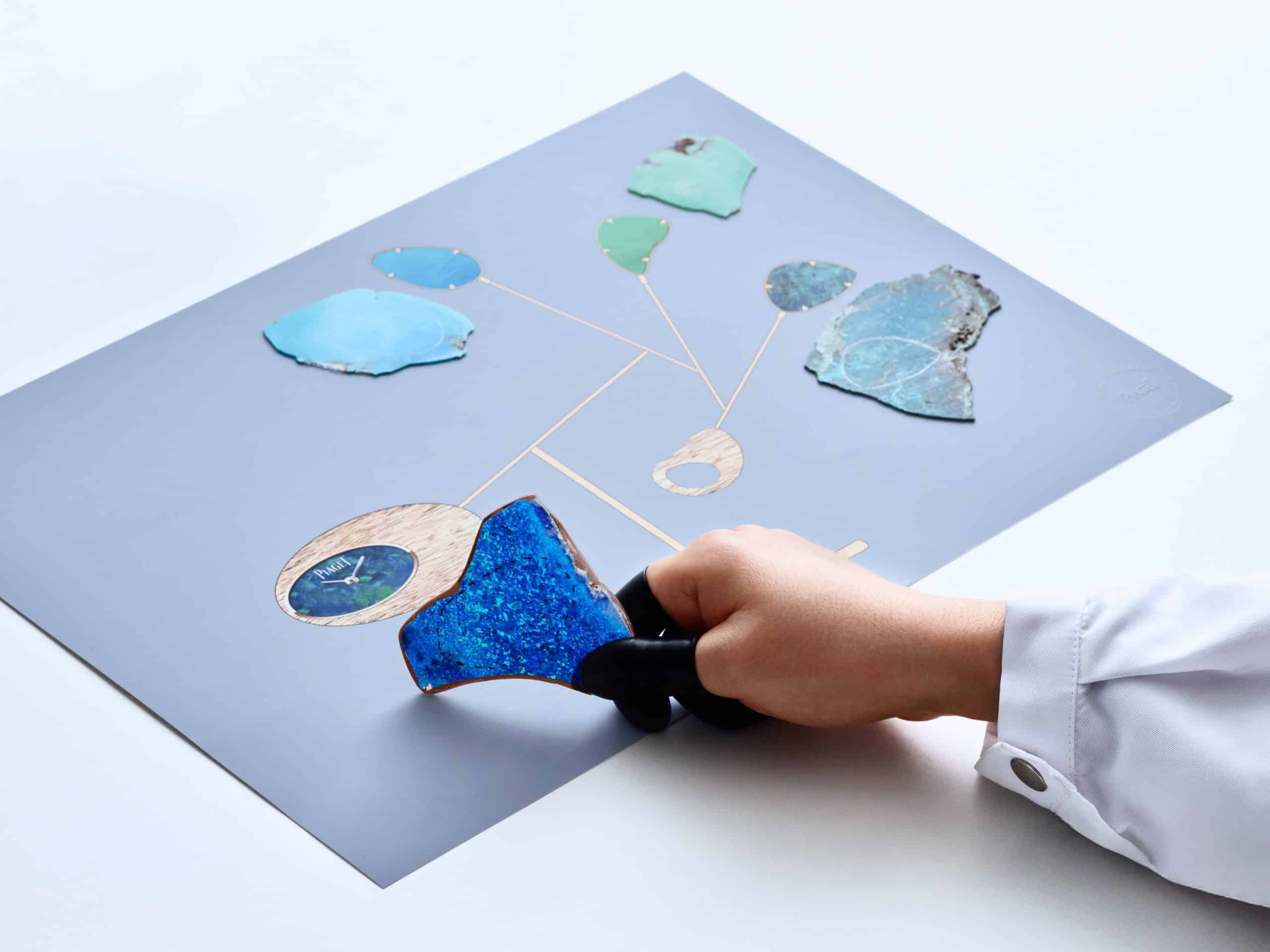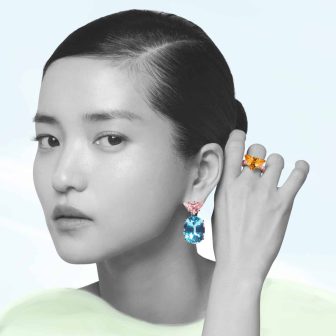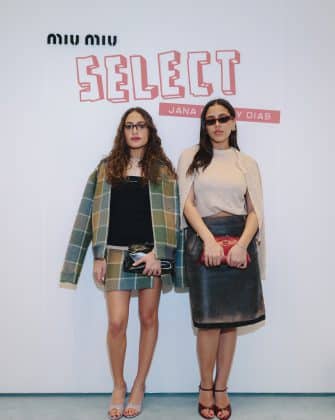Written By: Ali Y. Khadra & Khansaa Houlbi
A glimpse into Piaget's universe of shape, movement, and light, where every curve tells a story of artistry and innovation.
In June 2025, the technicolor city of Barcelona set the stage for Piaget’s latest act of brilliance as the Swiss jeweler and watchmaking house unveiled the second chapter of its creative trilogy. Continuing the story that began with Essence of Extraleganza, this new chapter, Shapes of Extraleganza, draws on bold forms, exploring geometry, rhythm, and movement through creations that balance precision with play. Each piece reflects Piaget at its most confident, where gold and gemstones transcend material to become instruments of motion, artistry, and imagination.
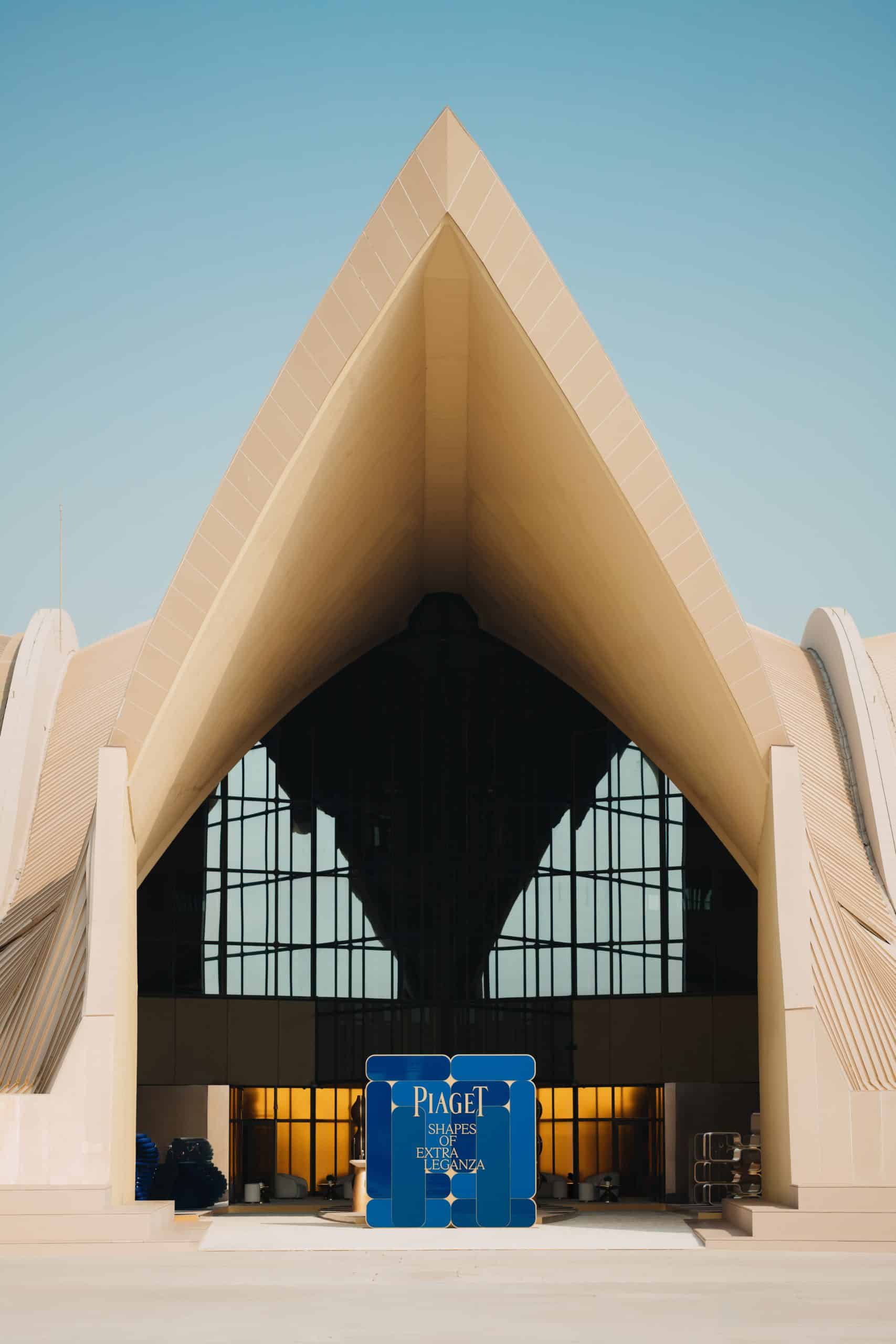
Courtesy of Piaget
But the story did not end in Barcelona. We followed the trail of diamond dust to Abu Dhabi, where on October 29th Piaget joined forces with Abu Dhabi Retail to bring Shapes of Extraleganza to life once again at the Erth Edition. The venue, whose name translates to “legacy” in Arabic, offered an architectural dreamscape of light and geometry. Designed by French architect Roger Taillibert, Erht’s sweeping curves resemble a falcon in flight, perfectly mirroring Piaget’s own design language built on movement, artistry, and the beauty of contrast.
For the occasion, Piaget revealed a mesmerizing high jewelry collection that celebrates its mastery of shape. Each piece revisits archival marvels while introducing new expressions that connect the Maison’s history with the present. Shapes of Extraleganza feels like a love letter to art and collaboration echoing Piaget’s storied friendships with Salvador Dalí, Arman, and Andy Warhol. Yves Piaget’s famous circle, affectionately known as the Piaget Society, helped transform jewelry into a living art form, a sprit that still defines the Maison today.
Among the evening’s treasures was Shimmering Lights, an Abu Dhabi exclusive swinging sautoir that captured the city’s maritime soul. Its iridescent mother-of-pearl shimmered with every moment, mirroring the light of the sea and honoring the legacy of the region’s pearl divers. It was both homage and innovation, a creation that carried emotion and artistry in perfect balance.
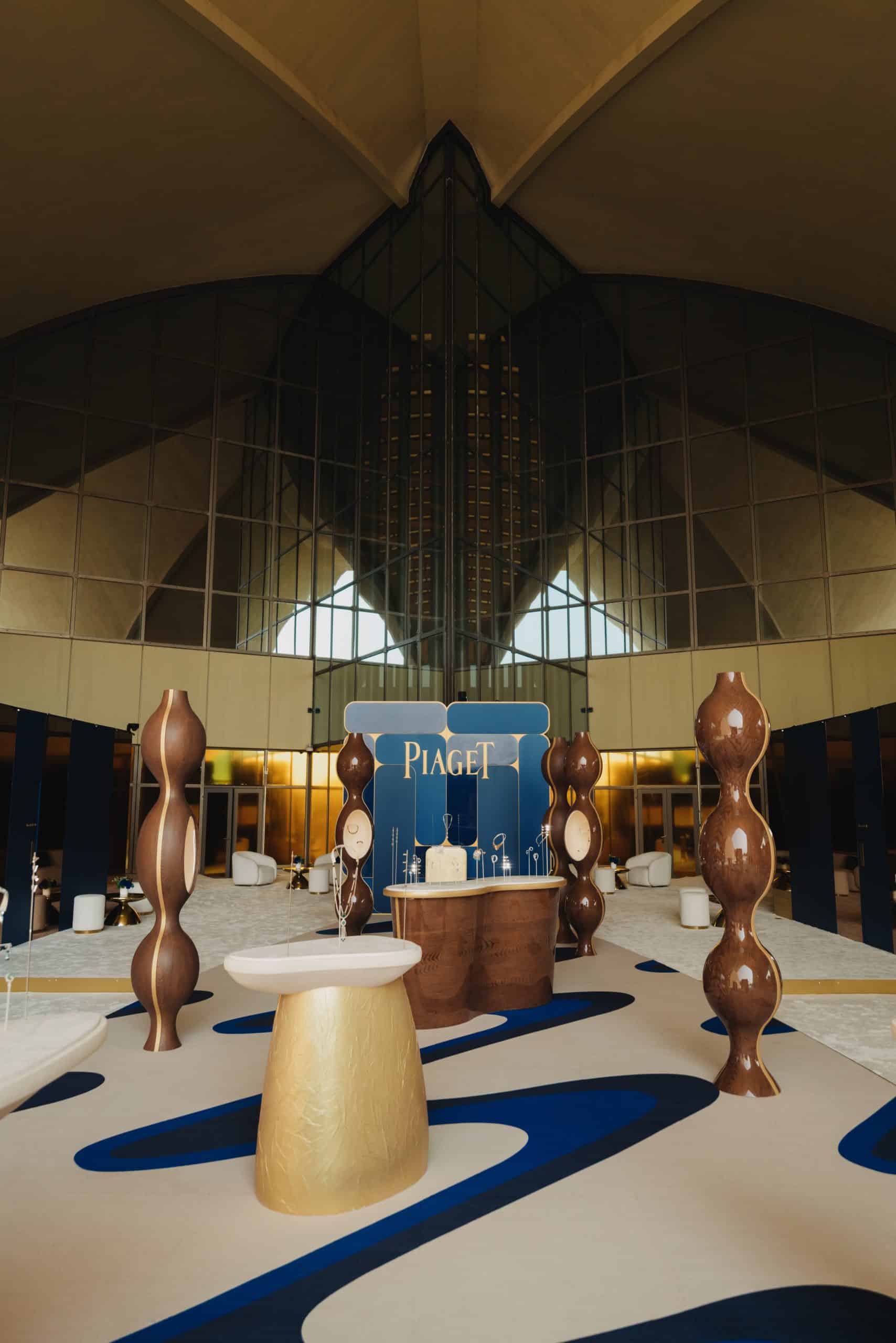
Courtesy of Piaget
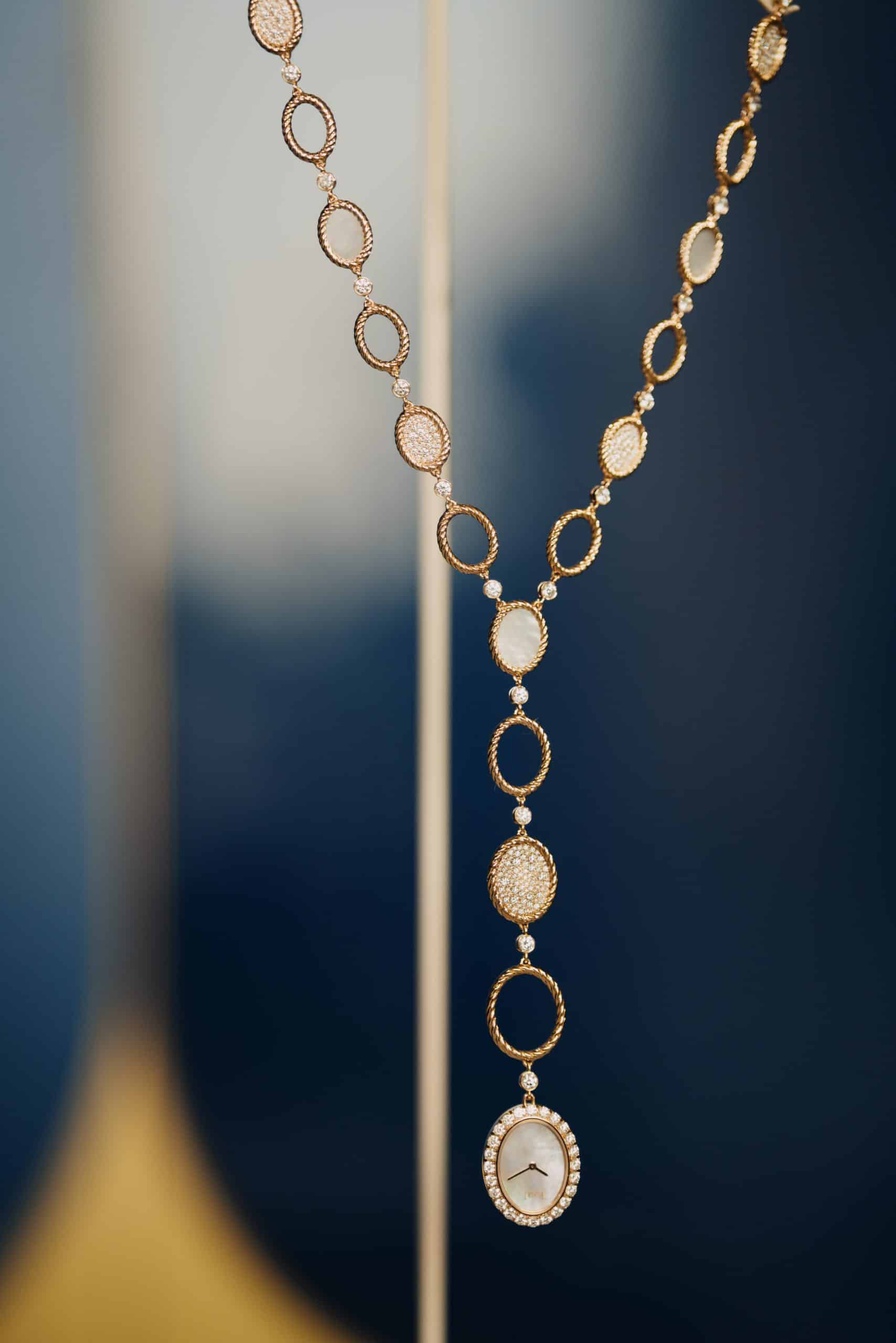
Shimmering Lights | Courtesy of Piaget
To celebrate this chapter, we returned to where it all began – our first encounter in Barcelona – where we sat down with Piaget team: CEO Benjamin Comar, Head of Gemmology Guillaume Chautru, and Head of Patrimony Jean-Bernard Forot. Together, we explored how Shapes of Extraleganza continues Piaget’s ongoing dialogue between past and present, desire, craft and imagination.
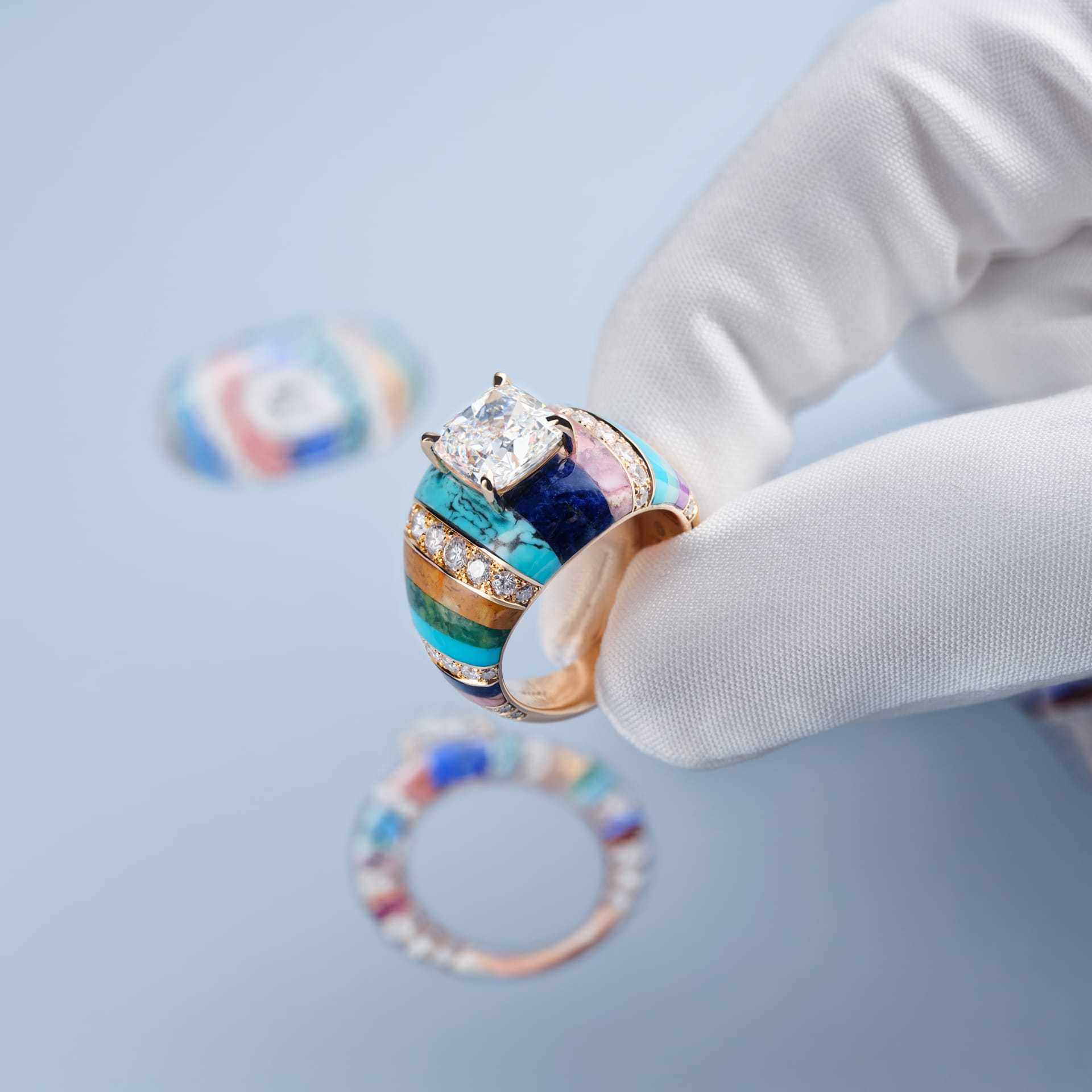
Courtesy of Piaget
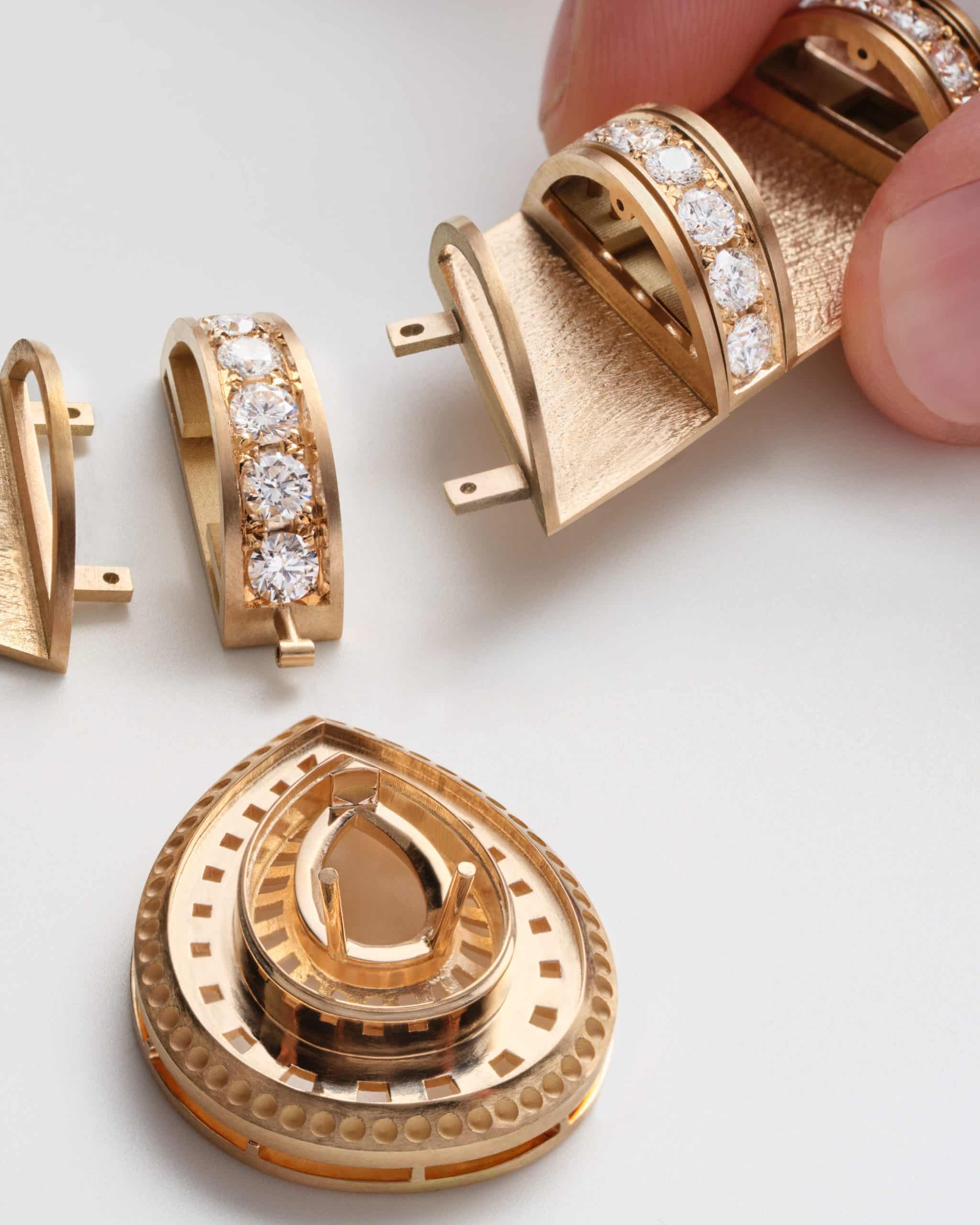
Courtesy of Piaget
ALI Y. KHADRA: When exploring archival collections and themes tied to the Maison’s heritage, how do you balance honoring tradition while still keeping innovation and the future in mind?
BENJAMIN COMAR: We’re lucky to have, at Piaget talented people who have been in the Maison for many decades and they know the pillars and the archive by heart, whether it’s at patrimony, marketing, workshops, or Stéphanie Sivrière, our Artistic Director. So I follow their lead. There are always a lot of conversations between R and D and design. As an example, when we first wanted to reintroduce the Swinging Sautoir necklaces in 2023, we wanted a certain type of chain, hand-made, from the patrimony but we had lost the know-how. The team has found its way again and has improved it along the way with new techniques. A perfect example of how past and present can be fused.
AYK: Shapes of Extraleganza also explores previous collaborations between artists such as Salvador Dalí and Andy Warhol. Is artist collaboration something we will see more and more of with Piaget’s jewelry collections?
BC: This collection pays homage to the connections between Piaget, artists, and design, yes. Today we still collaborate with artists, of course, especially when we want to bring a local touch to something we do regionally, like at Art Dubai with Alymamah Rashed. As for a capsule collection per se with an artist, let’s see, but that’s not in the works at the moment.
AYK: How important would you say it is for jewelry to intersect with art, architecture, fashion or even technology today?
BC: I would say that above all, it needs to be authentic and to say something about the Maison. Clients are highly sensitive to this notion, more than record for the sake of record or high tech for the sake of it. If it happens, they want to know how it relates to the story of the Maison, like our mastery of ultra-thinness.
AYK: Are there techniques or savoir-faire from the archives that are being revived for modern collections?
BC: A lot, lately we have revived another of the gold-engraving techniques that we had in the patrimony, the drape effect, and have added this to the Masterline, Limelight.
AYK: If you had to summarize your vision for the next chapter of Piaget in one sentence, what would it be?
BC: Consistency, boldness and distinction. Nothing has changed since 2021.
AYK: And lastly, what is your favorite sorbet flavor?
BC: Lemon.
AYK: Shapes of Extraleganza draws inspiration from pop art, the 70s, and swirling psychedelic patterns. Could you walk us through your process of translating such a creative concept into reality?
GUILLAUME CHAUTRU: There is always a lot of dialogue between Stéphanie Sivrière, the Artistic Director and us. This is why we also go to the gem fairs together because we anticipate a lot of the process, we are going to fall in love with a stone and imagine something or I just go with a list of things to find. And along the way you find other things that you were not looking for. But lately, it has become as complicated to work on a central stone than sourcing a tie and dye of sapphires or a perfect rainbow for an Aura watch for instance, as there are more and more actors in the field and everyone is looking for the same quality.
AYK: The collection explores key pillars of the Maison’s heritage. Were any innovative techniques introduced for this collection, or did you primarily use traditional methods from that era with a fresh creative approach? Or was it a combination of both?
GC: In a way, we haven’t used any new techniques for the collection on any of the pieces. It’s all things we had done previously, but never at this level or used like this, so there is always an element of surprise and unchartered territories. For instance, we have worked with Nelly Saunier before, it’s been almost a decade even, but creating an Yves Piaget rose of pink feathers on a transformable cuff like this and adding gemstones in the middle as pistils? Clearly it felt like a first time even if we had already worked many times with fragile feathers. But that’s the beauty of haute couture or high jewelry, expect the unexpected, reach for the stars.
AYK: Were there any specific gemstones that required unique methods to achieve their intended shapes?
GC: The Kaleidoscope necklace for sure. Finding the right stones, a harmony of colors with so many hues was already a challenge, but then finding some chunks big enough for this piece and placing them on rails to make sure the whole structure was even and steady was something else. This is why I like when the Maison produces not only pack shots but also know-how pictures of the pieces so that everyone can glimpse at what some stages were like.
AYK: Every gemstone has a story. Is there one particular stone in the collection that carries a personal significance to Piaget?
GC: The set of black opal fancy-shaped on the full set. It is incredibly rare to find a full batch like this, we just knew we had to design around them and use them all. And again, the Extraleganza magic works, it’s bold but also tamed with the deep blue hues of the central sapphires and the frosted effect on the white gold necklace. It creates a unique balance and harmony of color that in the end, look absolutely Piaget. And I would add that this set is all the more important to us as opals were and still are Yves Piaget’s favorite stone. He used to say that opals were like people, full of different hues like personalities. I always think of him when I get to examine new opals.
AYK: Lastly, what is your favorite sorbet flavor?
GC: Mangue!
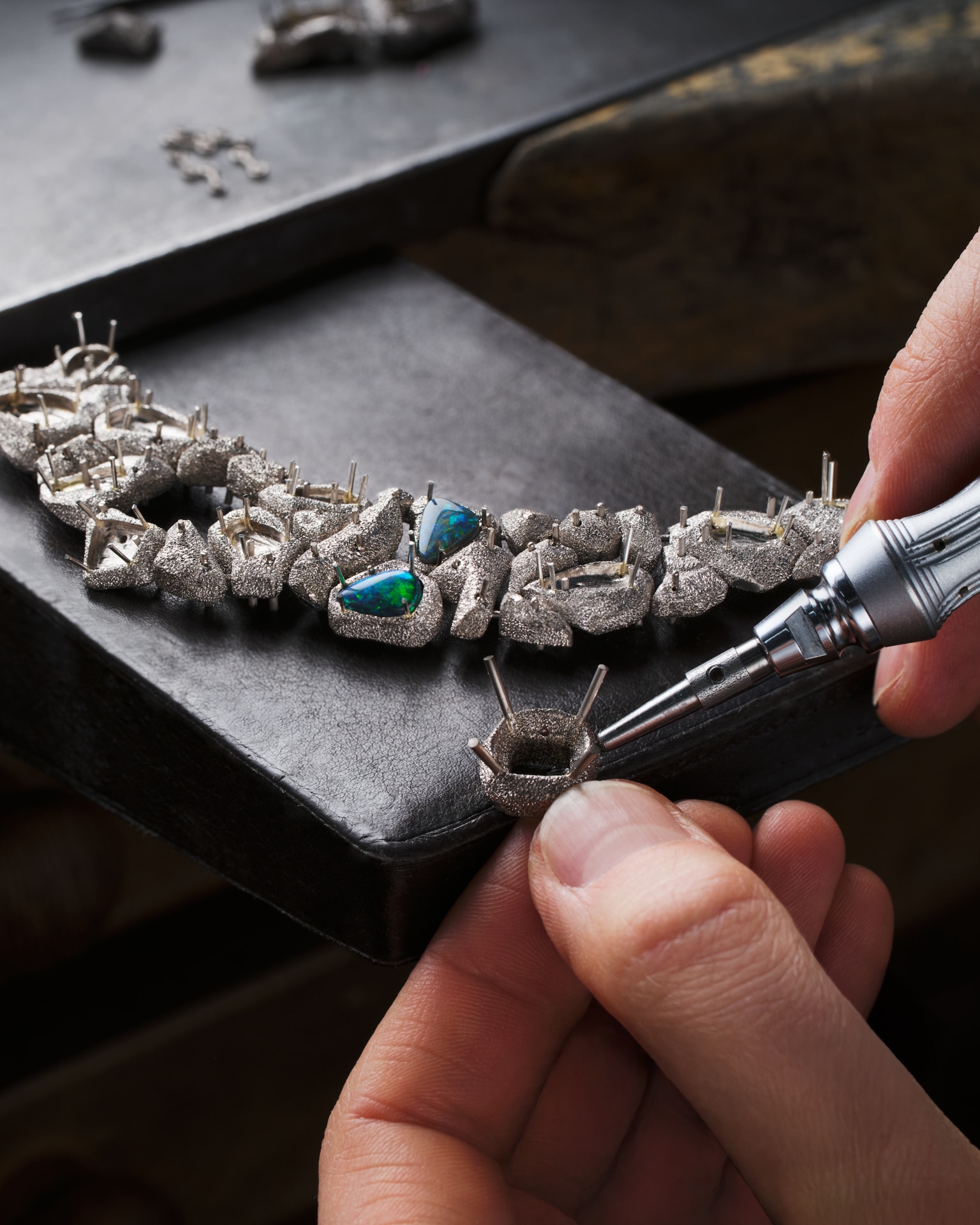
Courtesy of Piaget

Courtesy of Piaget
AYK: Shape and form is an important pillar of Piaget. Why was it important for Piaget to explore shapes and forms now?
JEAN-BERNARD FOROT: We’ve been reconnecting past and present times since 2023 and the reintroduction of the Swinging Sautoirs and the cuff watches. Last year, our 150th anniversary gave us the perfect example to deep dive into some of our sagas like the art of ultra-thinness with the AUC Tourbillon or the return of the iconic Piaget Polo 79. This year, we naturally embraced the blooming chapter of the 60’s and the creativity in the jewelry watch field with the introduction of Sixtie, a brand new collection deeply rooted in our patrimony. The shape aspect connects us back to creativity, boldness, our connections to art and design, there are a lot of things to tell, far beyond the watches.
AYK: The collection is greatly inspired by the 70s and Pop Art and the close relationship between the Maison and artists such as Salvador Dalì and Andy Warhol, can you tell us how impactful was that period for Piaget’s future collections and where it currently stands?
JBF: The late 60’s, early 70’s were really a moment in time where creativity was thriving and design and art were following the other revolutions. The same process happened at Piaget, the clients were becoming friends and friends were becoming clients. The Piaget family had many connections with this intelligentsia from the 70’s and every set of this collection is paying an homage to a style, an artist, a movement but always the Piaget way. Here you have a glimpse of the Piaget movement, there a kinetic homage but full ornamental stones… It’s a very rich collection and yet very respectful and humble, somehow.
AYK: In what ways did Piaget’s heritage and history inspire its modern collections?
JBF: It’s there, it’s the alpha and omega but it’s never obvious. It’s natural, flowy, but not literal. For me, the most beautiful example is the Swinging Sautoir we have introduced in April at Watches and Wonders, purple and orange with a stunning white opal cabochon in the center. At first glance, it’s impossible to know if it’s vintage or modern, it feels modern but evergreen, but not old-fashioned if you see what I mean? There is a perfect balance, an identity and yet it’s a bold and different proposition.
AYK: Piaget is renowned for some of the most revolutionary and iconic techniques in working with gold, most notably Decor Palace. How do you preserve not only the pieces themselves but also the knowledge of craftsmanship, sketches, and original designs?
JBF: By working around these techniques non-stop, changing, evolving, applying them on new products. Which implies training more people, of course. But we’re lucky at Piaget to be surrounded by passionate artisans who know the savoir-faire by heart and love to explore new depths.
AYK: We’ve explored Essence of Extraleganza and now Shapes of Extraleganza, can you give us a peak into what future facet of Piaget’s history can we expect to explore?
JBF: This is indeed a trilogy and the third chapter will be unveiled next year to close this Extraleganza exploration, but I cannot, obviously, disclose anything. It will be very Piaget, that’s for sure.
AYK: And lastly, what is your favorite sorbet flavor?
JBF: Peach.
